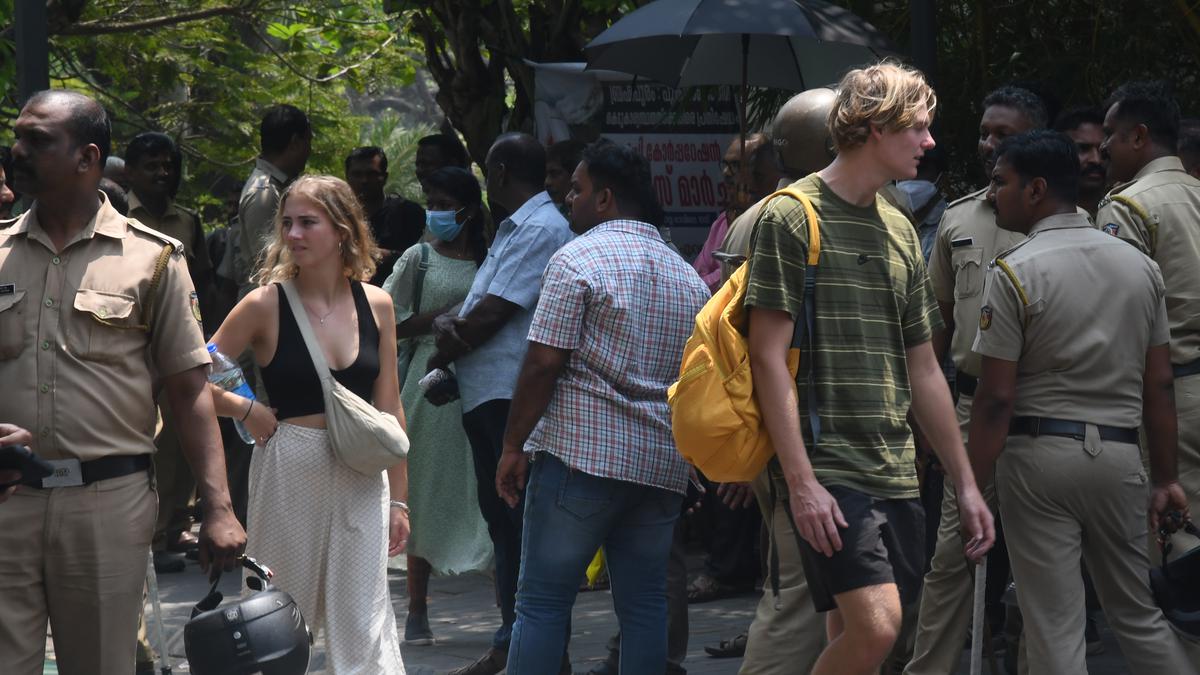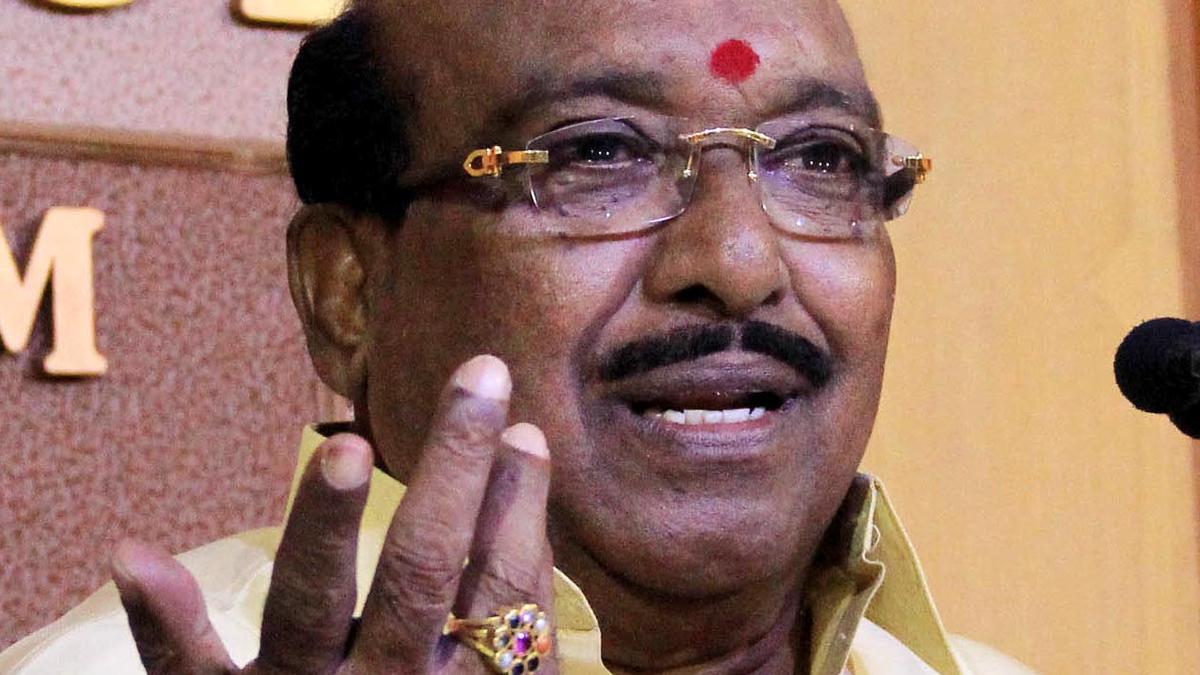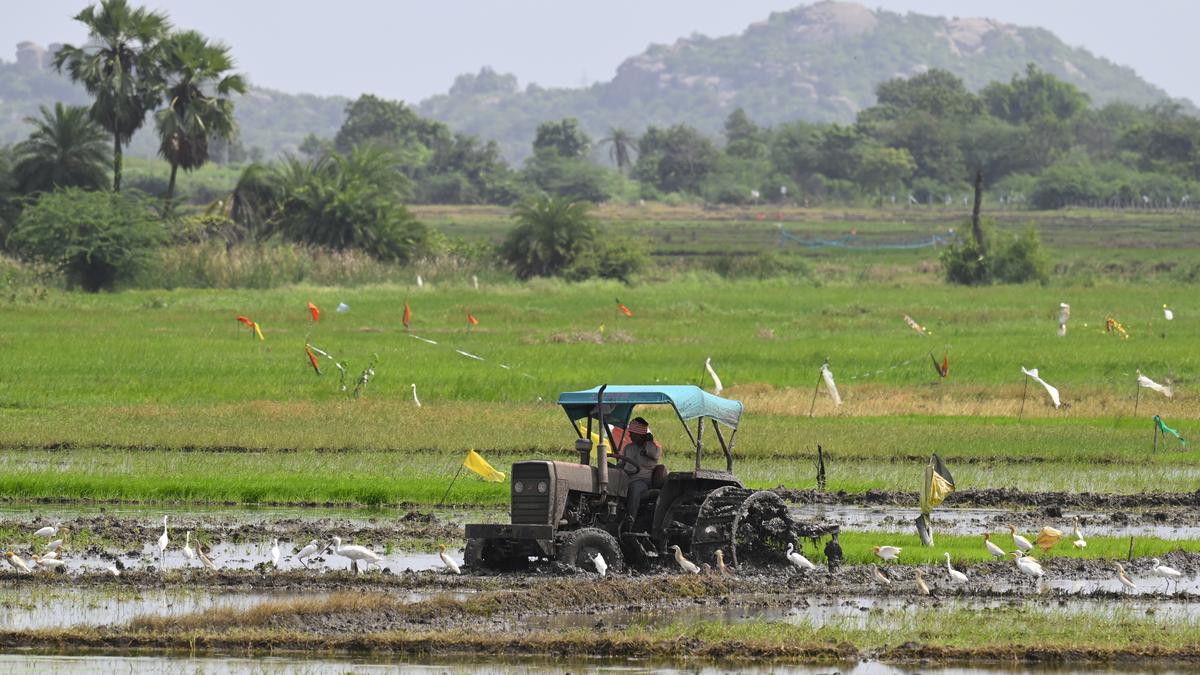The massive fire at Brahmapuram in the immediate suburbs of Kochi and the toxic smoke that engulfed much of the city and its suburbs came at a time when foreign tourists had just resumed their arrival in Kerala following the pandemic. A foreign couple in front of the Subhash Bose Park in Kochi.
| Photo Credit: H. VIBHU
The massive fire that lasted over a week at Brahmapuram and the resultant toxic smoke that engulfed much of Ernakulam district could dent Kerala’s image as one of the must-see tourist destinations in the world.
Early this year, a New York Times report had listed the State as one of the 52 places to visit in 2023, while the TIME magazine featured it as one among the 50 extraordinary destinations to explore in 2022. Besides, travel guide publisher Lonely Planet had in 2019 listed Kochi as among the top cities to visit in 2020.
The State was waiting to reap dividends post-pandemic when the fire at the garbage dumping yard, which was already in the news for the wrong reasons, has threatened to play spoilsport with tourist arrivals, according to tourism stakeholders. It is especially true since Kochi is considered as the tourist gateway to Kerala, and the sector earned the State an average of around ₹40,000 crore a year until the pandemic struck.
Many hotels and other accommodation units in Kochi have already reported cancellation of bookings for the month as a fallout of the deteriorating air quality, although the figures are not alarming as on date. Most tourists have instead opted to visit Munnar, Thekkady, and Wayanad. The concern over air quality comes at a time when Kochi is hosting the fifth edition of the Kochi-Muziris Biennale (KMB), and Kumarakom in the neighbouring Kottayam district is set to host 200 G-20 delegates from month-end.
A senior official of India Tourism’s regional office here spoke of the need for confidence building measures to minimise the damage caused to Kerala’s image as a popular Responsible Tourism destination. “After all, scientific garbage treatment is at the core of Responsible Tourism.”
The massive fire at Brahmapuram led to a few panic-stricken foreign and domestic tourists visiting the office at Fort Kochi seeking clarification on whether there was any official statement from the government to tourists — most of whom had come to visit KMB — on the need to relocate out of Kochi. “This was sadly lacking. It would have been ideal if steps had been taken to make them feel at home here through proper and timely communication,” he said.
Apart from health hazards, the long-term fallout of the fire include damage to the iconic backwaters of Kochi and central Kerala, said Muralee Menon, a doctorate holder in tourism management and former director of Hydrel Tourism, who readied and helped implement a sustainable tourism action plan at Kumbalanghi, India’s first model tourism village. “It is a matter of shame that Kochi does not have a proper garbage treatment plant, with the result that vast quantities of plastic, toilet and other waste are dumped into the backwaters. Kerala Tourism must take steps so that the fire does not affect tourist arrivals in the coming tourist season, especially so since the disheartening air quality that it triggered received wide media coverage,” he added.





